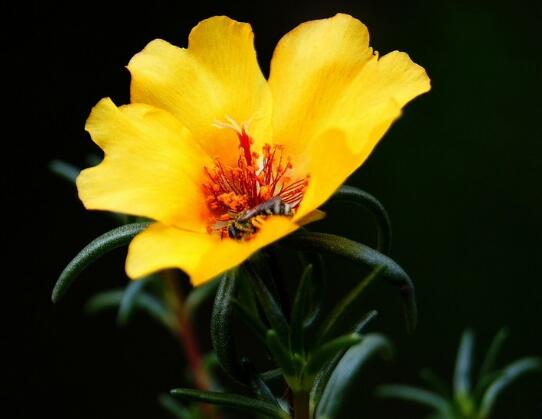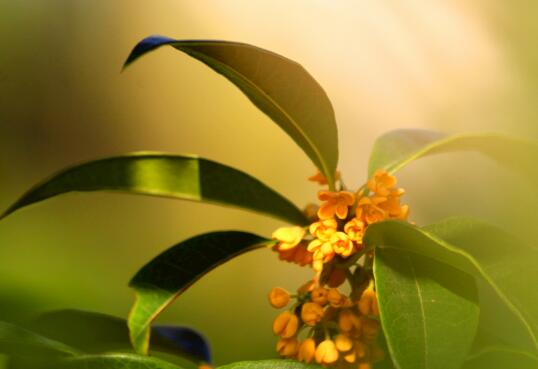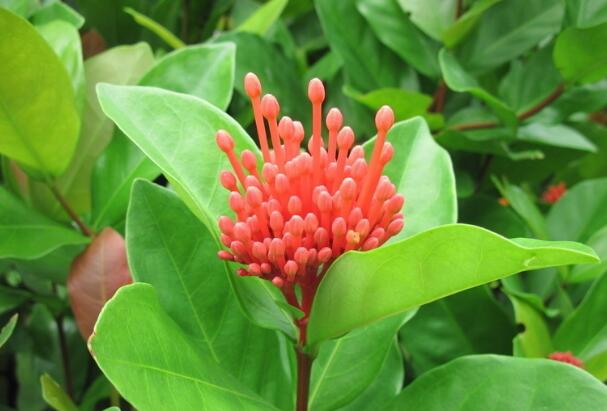What if Scutellaria barbata grows insects? disease and pest control of Scutellaria barbata / 3 insect pests and 2 diseases
Scutellaria barbata is a kind of plant with high ornamental value, and many people are amazed by the beauty of its flowering. But in a beautiful flower, if there are diseases and insect pests, it will gradually wither, thus losing its sense of beauty. About Scutellaria barbata long worm how to do, Scutellaria barbata pest control and how to do? Next, the editor will take you to learn about it.
First, Scutellaria barbata long worm how to do / symptomatic control

With regard to the question of how to deal with Scutellaria barbata worms, in fact, it is not difficult to say that it is difficult, and it is not easy to say simple. There's nothing you can do if you don't know what caused it, but it's easier to treat it if you know what it is. Below are the pest control of Scutellaria barbata and the characteristics of its appearance. Friends who want to know can read on.
2. Disease and pest control of Scutellaria barbata
1. Spodoptera litura pest
Spodoptera litura is a brown-shaped pest. This pest mainly harms the leaves and roots of Scutellaria barbata. It will slowly erode the plant body and absorb plant nutrients. Finally, Scutellaria barbata slowly withered to death because of lack of nutrients.
Control method: when we encounter this kind of pest, we can choose to spray Scutellaria barbata with 3000 times EC, which is usually sprayed once every 7-10 days, and the pest can be completely eliminated after 2-3 times.
two。 Mole cricket pest
The smallest mole cricket 2cm, this pest mainly harms the seedlings of plants, it will bite the seedlings, the development will eventually make the seedlings of Scutellaria barbata appear hemp-like, and finally slowly withered, it can be described as a great harm.
Prevention and control methods: when this kind of pest occurs, it must be found as soon as possible, except as soon as possible, if it is late, it can only be sown again. Apart from this pest, the most direct way is to spray it directly. We can choose to use 50% phoxim EC 500 times to irrigate the roots of seedlings, so as to eliminate mole insects.
3. Aphid pest
Aphids are common to many plants, and Scutellaria barbata is no exception. The size of this pest is very small, it is difficult to see with the naked eye, generally can only be inferred from the symptoms of this pest. This kind of pest mainly harms the leaves of Scutellaria barbata, which will slowly absorb the sap of the leaves, resulting in withered and yellow leaves and even spread to the whole body of the plant, resulting in the phenomenon of death.
Prevention and control methods: in the initial stage of the discovery of this pest, we must use chemicals to kill in time. We can use 1000 times of marathon emulsion, which is usually sprayed once every 5-10 days, and this pest can be thoroughly understood after 1-2 times.
4. Rust disease
Rust is mainly harmful to Scutellaria barbata leaves and fruits, it will first cause local pollution, so that there are some blister spots on the leaves, so that it will gradually spread to the whole body, and finally appear the phenomenon of leaf shedding and even plant death.
Control methods: rust disease is an important doubt in the prevention and control of diseases and insect pests of Scutellaria barbata, because it is extremely harmful and spreads quickly, so we must solve this disease as soon as possible. We can spray Scutellaria barbata with 150-200 times liquid high-fat membrane emulsion when it is found that this disease.
5. Root rot disease
This is a disease caused by fungi, which will greatly weaken the ability of Scutellaria barbata to absorb nutrients, resulting in the phenomenon of yellowing and death due to lack of nutrients.
Prevention and treatment: the high incidence period of this disease is from March to April every year, so special attention must be paid at this time. If we want to treat this disease, we can use copper preparation or carbendazim to control Scutellaria barbata.
Pest control of Scutellaria barbata
Scutellaria barbata generally refers to sunflower (Portulaca herbaceous flower)
Sunflower (Latin name: Portulaca grandiflora), also known as pine leaf peony, Scutellaria barbata, Portulaca perennial flowers, often for annual cultivation. Like the warm, sunny and dry environment, see the sun blooming, morning, evening, cloudy days close, so it has the name of "sunflower, noon flower".
Native to Brazil in South America. Now it is cultivated all over China. There are many colors, light fragrance, easy to raise and easy to survive.
Scutellaria barbata prefers a warm and humid climate and does not require high soil conditions. Wild is most common in ditches, fields and roadside damp places. Too dry soil is not good for growth. Seeds are easy to germinate, and the optimum temperature for germination is 25c. The life span of seeds is 1 year. Pest control Scutellaria barbata in the growth process, almost no disease occurred, the flowering period is prone to aphids and vegetable black insects, the former can be controlled with dimethoate, the latter can be sprayed with 1000 times of dichlorvos. Control methods of diseases and insect pests of Scutellaria barbata
Scutellaria barbata, also known as pine leaf peony, dragon beard peony, golden rhododendron, Portulaca oleracea, sunflower, noon flower, is a perennial herb of Scutellaria baicalensis. Breeding Scutellaria barbata to control diseases and insect pests is indispensable, the following editor to share with you in the cultivation process of Scutellaria barbata diseases and insect pests control methods?
Rust: mainly damaged leaves, the leaves of the damaged plants showed yellowish-brown spots on the back, and in severe cases, the leaves turned yellow and fell off. Prevention and treatment: at the initial stage of the disease, you can use 97% sodium rust 300-400 times (with a small amount of washing powder), or spray with Baume 0.2-0.3 degree stone-sulfur mixture every 7-10 days, 2-3 times in a row.
Epidemic disease: it is easy to occur in high temperature and rainy season, showing waterlogged dark spots on the leaves, and then wilting and drooping. Control method: spray 1 ∶ 1 ∶ 120 Bordeaux solution or dimethazone 800 times solution in the evening.
Insect pests: there are mainly aphids, African mole crickets, Spodoptera litura, etc., which can be sprayed with 1000 times of 40% dimethoate EC or 1000 times of 50% phosphoramine EC. Aphids and vegetable black insects are easy to occur during flowering, the former can be controlled by dimethoate, and the latter can be sprayed with 1000 times of dichlorvos.
Control of diseases and insect pests of Scutellaria barbata
In the process of growth, Scutellaria barbata has almost no disease, and aphids and vegetable black insects are easy to occur during flowering. The former can be controlled by dimethoate, and the latter can be sprayed with 50% dichlorvos 1000 times.
Seed retention technique from May to June, when the seeds are gradually mature, the fruit branches are harvested in batches, dried in the sun or shaded, rubbed out the seeds, winnowed the stems and impurities, put them in a cloth bag and stored in a dry place. The continuous cropping field of Scutellaria barbata does not need to leave seeds, and the roots and seedlings can be renewed for 3-4 years.
With regard to the prevention and control methods of diseases and insect pests of Scutellaria barbata, the editor will share with you today. I hope the above can help you.
- Prev

The efficacy and function of laurel, beautiful and ornamental plant / flower and fruit root can cure all kinds of diseases.
Laurel is a common flower plant in people's life, which has high ornamental value, and many people are cultivating it everywhere, but besides being used for ornamental, it also has many other functions. What are the specific effects and functions of laurel? Next, the editor will take you to learn about it.
- Next

What to do when the dragon boat flower grows insects? disease and pest control of the dragon boat flower / killing aphids with tobacco ash
Dragon boat flower, a very beautiful ornamental plant, it not only has a long flowering period, but also has a beautiful flower shape, but also has a rich color, which is deeply loved by flower friends. Many flower friends plant dragon boat flowers at home, but for some reason, some worms often appear, which is distressing. What about the dragon boat flowers with worms?
Related
- Fuxing push coffee new agricultural production and marketing class: lack of small-scale processing plants
- Jujube rice field leisure farm deep ploughing Yilan for five years to create a space for organic food and play
- Nongyu Farm-A trial of organic papaya for brave women with advanced technology
- Four points for attention in the prevention and control of diseases and insect pests of edible fungi
- How to add nutrient solution to Edible Fungi
- Is there any good way to control edible fungus mites?
- Open Inoculation Technology of Edible Fungi
- Is there any clever way to use fertilizer for edible fungus in winter?
- What agents are used to kill the pathogens of edible fungi in the mushroom shed?
- Rapid drying of Edible Fungi

